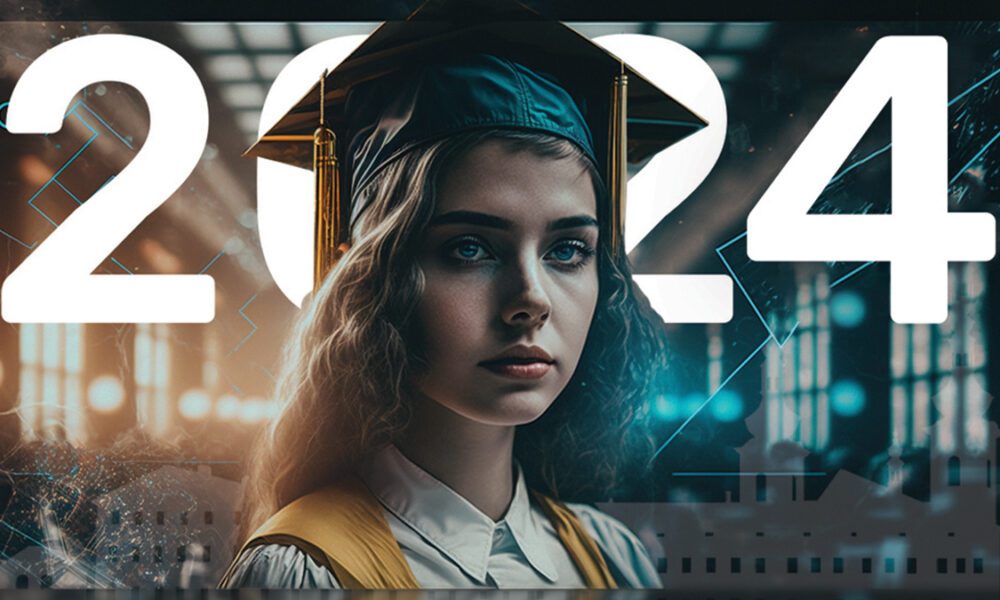Educational Technology Trends to Watch: Embracing the Future of Learning

The education landscape is constantly evolving, and technology plays a pivotal role in shaping the future of learning. From interactive classrooms to personalized learning experiences, edtech transforms our teaching and learning. Let’s dive into some of the most exciting educational technology trends, including the innovative use of QR codes in education.
1. Interactive Learning with Augmented Reality (AR) and Virtual Reality (VR): Engaging Minds and Expanding Horizons
In the ever-evolving landscape of education, augmented reality (AR) and virtual reality (VR) are emerging as powerful tools to revolutionize how students learn and engage with content. These immersive technologies transport learners from passive observers to active participants, allowing them to explore virtual worlds, interact with digital objects, and manipulate complex concepts in ways that were once unimaginable.
Augmented Reality (AR): Bridging the Gap Between Real and Digital Worlds
Augmented reality overlays digital content onto the real world, enhancing the physical environment with interactive digital elements. In the classroom, AR applications enable students to bring their textbooks to life, turning AR codes into dynamic 3D models, videos, and animations. For example, students studying anatomy can use AR apps to visualize the human body in 3D, rotating and dissecting virtual organs with a simple finger swipe.
AR also facilitates interactive learning experiences that promote exploration and discovery. With AR-enabled mobile devices or headsets, students can embark on virtual scavenger hunts, solving puzzles and uncovering hidden clues throughout the school or campus. This gamified learning approach makes education more engaging and encourages collaboration and critical thinking skills.
Virtual Reality (VR): Immersing Students in Lifelike Simulations
Virtual reality transports users to entirely virtual environments, immersing them in lifelike simulations replicating real-world scenarios or abstract concepts. In the classroom, VR opens doors to immersive learning experiences that transcend the limitations of traditional teaching methods. Whether exploring the surface of Mars, diving into the depths of the ocean, or stepping inside a historical monument, students can embark on educational journeys that spark curiosity and ignite their imaginations.
VR simulations allow students to engage in experiential learning and practice real-world skills in a safe and controlled environment. For example, medical students can perform virtual surgeries, engineering students can design and test prototypes, and language learners can immerse themselves in foreign language environments. These hands-on experiences not only deepen understanding but also foster confidence and mastery in complex subjects.
The Pedagogical Benefits of AR and VR in Education
- Increased Engagement: AR and VR captivate students’ attention and immerse them in interactive learning experiences that appeal to diverse learning styles.
- Enhanced Understanding: By visualizing abstract concepts and complex phenomena in 3D, AR and VR make learning more tangible and accessible.
- Active Learning: AR and VR encourage active exploration and experimentation, empowering students to take ownership of their learning journey.
- Personalized Learning: AR and VR adapt to individual learning preferences and pace, allowing students to learn at their own speed and level of comprehension.
- Collaborative Learning: AR and VR facilitate collaboration and teamwork, enabling students to collaborate on projects and share their insights and discoveries.
2. Personalized Learning with Artificial Intelligence (AI)
Every student is unique, and AI is helping educators tailor lessons to individual needs. AI-powered platforms can analyze a student’s performance and learning style, offering customized content and exercises to help them excel. Whether a student needs extra practice in math or a more challenging reading list, AI ensures that everyone gets the support they need. It’s like having a personal tutor for each student!
3. Gamification: Learning Through Play
Who says learning can’t be fun? Gamification is the process of incorporating game elements into education to make learning more engaging. From earning badges for completing assignments to competing in virtual challenges, gamification motivates students and makes learning an adventure. Platforms like Kahoot! and Classcraft are leading the way, turning classrooms into exciting learning environments.
4. The Rise of Microlearning
In today’s fast-paced world, bite-sized lessons are becoming increasingly popular. Microlearning involves breaking down complex subjects into smaller, more manageable chunks. These short, focused lessons can be delivered through videos, quizzes, or interactive modules, making it easier for students to absorb information and retain knowledge. It’s perfect for on-the-go learning and fits well with the busy schedules of modern students.
5. Collaborative Learning with Edtech Tools
Collaboration is a key skill for the future, and technology is making it easier than ever for students to work together. Tools like Google Classroom, Microsoft Teams, and Zoom enable real-time collaboration, whether students are in the same room or across the globe. These platforms allow for seamless communication, file sharing, and group projects, fostering a sense of community and teamwork.
6. The Power of QR Codes in Education
QR Codes are those nifty little squares you’ve probably seen on menus, posters, and business cards. But did you know they’re also making waves in education? QR codes can link to supplementary materials, videos, or interactive exercises. For instance, a teacher might place a Video QR code next to a science experiment in a textbook, allowing students to scan it and watch a demonstration video.
In classrooms, QR codes can be used for scavenger hunts, linking to clues and information hidden around the school. They can also direct students to online quizzes or surveys, making gathering feedback and assessing understanding easy. The possibilities are endless, and these little codes are proving to be a big asset in modern education.
7. Cloud-Based Learning Platforms
The cloud has revolutionized how we access and share information. Cloud-based learning platforms like Canvas, Blackboard, and Moodle provide a centralized location for course materials, assignments, and grades. Students can access their coursework from any device, making learning flexible and convenient. These platforms also support multimedia content, forums, and peer reviews, enriching the educational experience.
8. Embracing STEAM Education
STEAM stands for Science, Technology, Engineering, Arts, and Mathematics. It’s an interdisciplinary approach that combines these subjects to foster creativity, innovation, critical thinking, and problem-solving skills. By integrating the arts, STEAM education encourages students to think more broadly and apply their learning in more diverse and creative ways. Here’s a closer look at what each component of STEAM brings to the table.
Science
Science education helps students understand the natural world through observation, experimentation, and analysis. It nurtures curiosity and encourages inquiry, allowing students to explore everything from biology and chemistry to physics and environmental science.
Technology
Technology in education isn’t just about using computers and tablets. It’s about understanding how technology works and how it can be used to solve problems. This includes coding, software development, robotics, and understanding the ethical implications of technological advancements.
Engineering
Engineering teaches students how to apply scientific and mathematical principles to design and build solutions to real-world problems. It involves critical thinking, creativity, and collaboration as students learn to create everything from simple machines to complex structures and systems.
Arts
The Arts add a vital creative dimension to STEM. These include visual arts, music, drama, dance, and more. Integrating the arts fosters creativity and innovation, encouraging students to think outside the box and approach problems from new angles. It also helps develop fine motor skills, visual learning, and cultural awareness.
Mathematics
Mathematics is the foundation for understanding patterns, quantities, and structures. It develops logical reasoning and problem-solving skills essential for success in science, technology, and engineering.
9. Enhancing Accessibility with Assistive Technology
Technology is breaking down barriers and making education more inclusive. Assistive technologies, such as screen readers, speech-to-text software, and adaptive keyboards, are helping students with disabilities access learning materials and participate fully in class. These tools ensure that every student has the opportunity to succeed, regardless of their individual challenges.
10. Data-Driven Decision-Making
Data analytics is transforming education by providing insights into student performance and behavior. Educators can use data to identify trends, track progress, and make informed decisions about instruction and intervention. By analyzing data from assessments, attendance, and engagement, schools can develop strategies to improve student outcomes and tailor support to those who need it most.
As we embrace these exciting trends in educational technology, it’s clear that the future of learning is bright. These innovations are not only enhancing the way we teach and learn but also preparing students for a world where technology is integral to every aspect of life. So, whether you’re an educator, a student, or just a curious learner, keep an eye on these trends – they’re shaping the classrooms of tomorrow today.
Read more from techbullion





